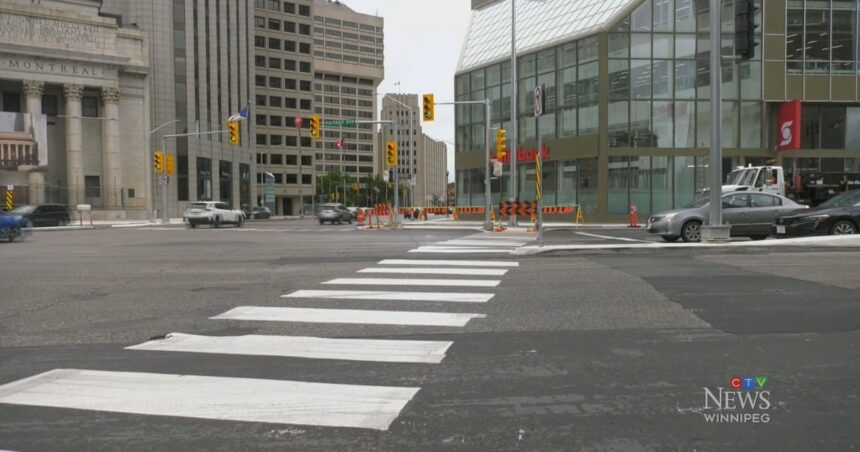After nearly five decades of detours through underground concourses, pedestrians will once again cross Winnipeg’s iconic Portage and Main intersection above ground starting today. The historic reopening marks the culmination of a contentious, years-long debate that has divided residents and city officials since barriers first went up in 1979.
“This isn’t just about removing concrete barriers—it’s about removing barriers to our city’s growth and identity,” said Mayor Scott Gillingham at yesterday’s press conference. “Portage and Main is the heart of Winnipeg, and today it begins beating with new life.”
The intersection, often called Canada’s windiest corner, has been off-limits to pedestrians since a controversial agreement between the city and adjacent property owners mandated underground crossings. The 40-year deal, which expired in 2019, was initially extended as city council debated the merits of surface-level crossings.
According to the Canada News department’s recent polling, public opinion has shifted significantly since 2018, when Winnipeggers voted against reopening the intersection in a plebiscite. Current surveys show 62% of residents now support the change, with strongest backing coming from younger demographics and downtown business owners.
The $3.8 million project includes enhanced crosswalks with accessibility features, wind barriers, and public art installations that celebrate the intersection’s significance in Canadian history. Traffic engineers have implemented sophisticated signal timing to minimize impacts on the roughly 77,000 vehicles that pass through daily.
“We’ve studied successful pedestrian integration models from Montreal, Chicago, and Helsinki,” explained urban planner Celia Zhang. “Our data suggests the traffic impact will be minimal—approximately 90 seconds added to peak commute times—while the economic benefits to downtown businesses could exceed $12 million annually.”
The Winnipeg Chamber of Commerce projects a 15% increase in foot traffic to surrounding businesses, potentially reversing the downtown vacancy trend that has troubled the city since the pandemic. According to CO24 Business analysis, similar urban redesigns in comparable cities have resulted in property value increases of 8-12% within three years.
Critics, including the Drivers’ Association of Manitoba, maintain concerns about traffic congestion and winter safety. “We respect the decision but remain skeptical about functionality during -30°C days with significant snowfall,” said spokesperson James Kowalchuk. “Time will tell if this becomes a vibrant pedestrian space or just a crossing people use only when absolutely necessary.”
The reopening ceremony begins at noon with Indigenous elders conducting a blessing ceremony, followed by a community walk across all four crosswalks. Local musicians, food vendors, and historical exhibitions will animate the intersection throughout the weekend.
“This intersection tells our story as a city—where fur traders met, where general strikes changed labor history, where our main streets come together,” noted heritage preservation advocate Teresa McKenzie. “Allowing people to experience this space directly reconnects us with our shared history.”
As Canadian cities increasingly prioritize pedestrian-friendly urban design, Winnipeg’s decision represents a significant shift in how municipalities balance vehicular efficiency with human-scale environments. The project has been closely watched by urban planners across North America as a case study in reversing car-centric infrastructure decisions.
As concrete barriers come down and pedestrians prepare to step into this historic crossroads, the question remains: will this reopening fundamentally transform Winnipeg’s downtown core, or simply become another chapter in the ongoing negotiation between vehicles and pedestrians in our evolving urban landscapes?










